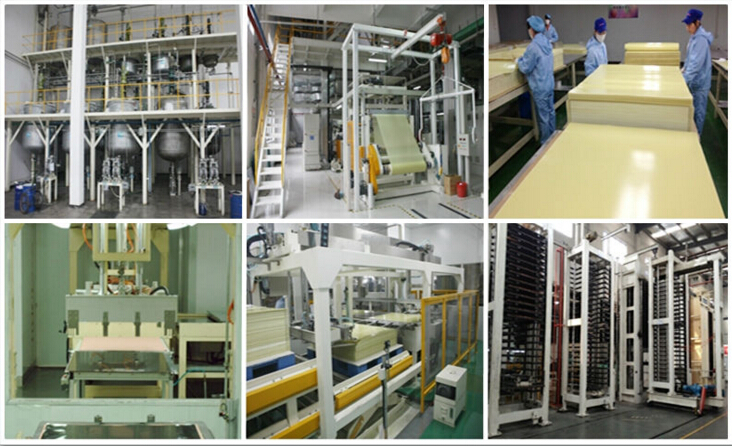- Model NO.: TL12330
- Usage: UPS, Lighting
- Discharge Rate: High Discharge Rate
- Rechargeable: Chargeable
- Voltage: 12V
- Dimension: 196*133*172mm
- Termail: F7
- Specification: CE, UL, RoHS, MSDS, UN38.3
- HS Code:
- Type: Lead-Acid Batteries
- Nominal Voltage: 12V
- Shape: Square Battery
- Model: Tl12260
- Capacity: 33ah
- Weight: 10.5kg
- Trademark: Telong
- Origin: Shenzhen, China (Mainland)
- Maintenance-free lead acid battery
- Small internal resistance, high output power
- Up to 5 years service life
- Complete sealed (no liquid leakage, no acid gas spill)
- Low self-discharge rate, less than 3.5% per month
- Can be used any direction, easy to transport
- Good corrosion resistant performance and deep discharge recovery performance
Applications
- Solar/Wind power system
- Emergency lighting system
- UPS and emergency power supply
- Control system
- Electric car
- Medical equipment
- Telecommunication equipment
Answer-Question
1. What is the definition of "cycle use" and "standby use"?
"Cycle Use" - direct power source:
Cycle Use can provide the power supply to power tools, and portable electronic products. It can also    be used for cycling charging and discharging usage such as electronics motorbike or vacuum  cleaner.
"Standby Use" - back up power:
Standby Use is mainly used for emergency power to avoid future damage that may be caused by a  sudden power outage.
2. What are the concerns when using Telong batteries in a parallel or a serial series?
- Do not mix brands, models and date codes?
- No separate discharge then charging in a serial configuration.
- Under parallel usage, pay close attention to the differences in voltage in each circuit.
- If the difference in voltage in each circuit is too high, do not charge/discharge as parallel.
- The environment of all circuits must be similar.
3. How can you check a battery's performance?
Different usage applications will use different methods for evaluating a battery's performance. Using a 20 hour rate or the 10 hour rate, you can use 0.05CA or 0.1CA to discharge the battery until the battery reaches a terminal voltage of 10.25 volts. You can then calculate the amp hours to see if the battery fits the specifications or not. For a 5 minutes rate, such as the HC1221W, you can use a 21 watts/cell discharge till the terminal voltage reaches a terminal voltage of 9.6 volts and then measure the discharge time to see if it meets the final specifications or not.
4. How can the conversion be made between "watts (W)" and "amp hours (Ah)"?
W=I x V = 4I (15 minute rate) = 2CV = 2V
(Ex. HC1217W = 17/4 = 4.25Ah)
5. When should a deep-cycle battery be used?
Deep-cycle batteries are used when 50% or more of the capacity is used per cycle. The most common use of deep-cycle batteries is in applications that require deep, repetitive drain, like powerful car audio systems, trolling motors, golf carts, electric wheelchairs, or RV house power sources. Public safety and high-performance vehicles are other applications that call for the special characteristics of deep-cycle batteries.
6. Does the deep-cycle battery have a "memory"?
No. The performance of deep-cycle batteries will be reduced over time, but deep-cycle batteries do not suffer from "memory effect" such as NiCd batteries do.
7. How are batteries rated?
Lead acid batteries are rated based on a capacity given in a defined time. There is not a set industry standard for how to rate a battery.
8. How long can a battery last?
The service design life of a battery varies considerably with how it is used, how it is maintained and charged, temperature, among other factors.
9. Do I need to add water to my battery?
No. Sealed lead acid batteries do not require the use of water.
10. What determines the life of a VRLA battery?
Sealed lead acid battery life is determined by many factors. These include temperature, depth and rate of discharge, and the number of charges and discharges (called cycles).
11. What is the difference between float and cycle applications?
A float application requires the battery to be on constant charge with an occasional discharge. Cycle applications charge and discharge the battery on a regular basis.
Welcome to our FR4,G10 processing page. We could offer most kinds of FR4,G10 products processing for you.Like FR-4, G-10 sheet material, FR-4 , G-10 Tube/rods. also like CNC machining parts. Also,we can customize FR-4,G10 products according to your sample or blueprint.
The main difference between NEMA Grades G10 and FR4 is that FR4 is a fire retardant grade of G10. Therefore, FR4 can be safely substituted where G10 Cnc is called for, while G10 can never be substituted where FR4 is called for.

FR-4 & G-10 Processing,FR4 Fiberglass Lapping Carrier,Epoxy Fiberglass Cloth Tube,G10 Cnc
JinYuan Group-NingBo JinYuan Insulation Material Co.,Ltd , http://www.ccl-manufacturer.com